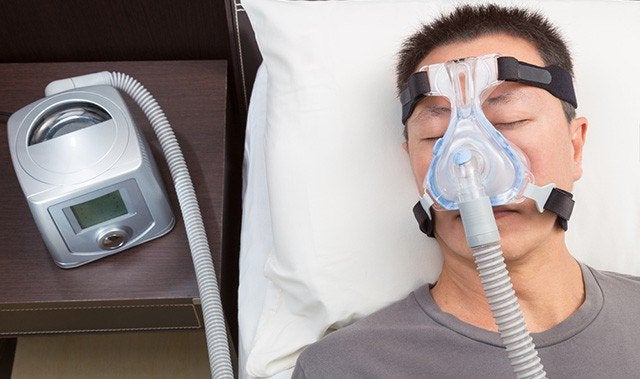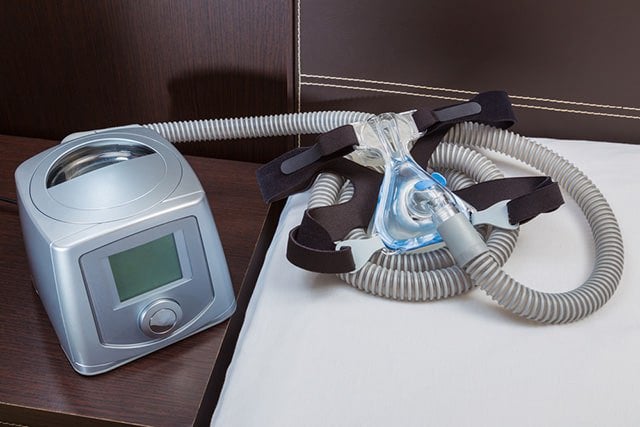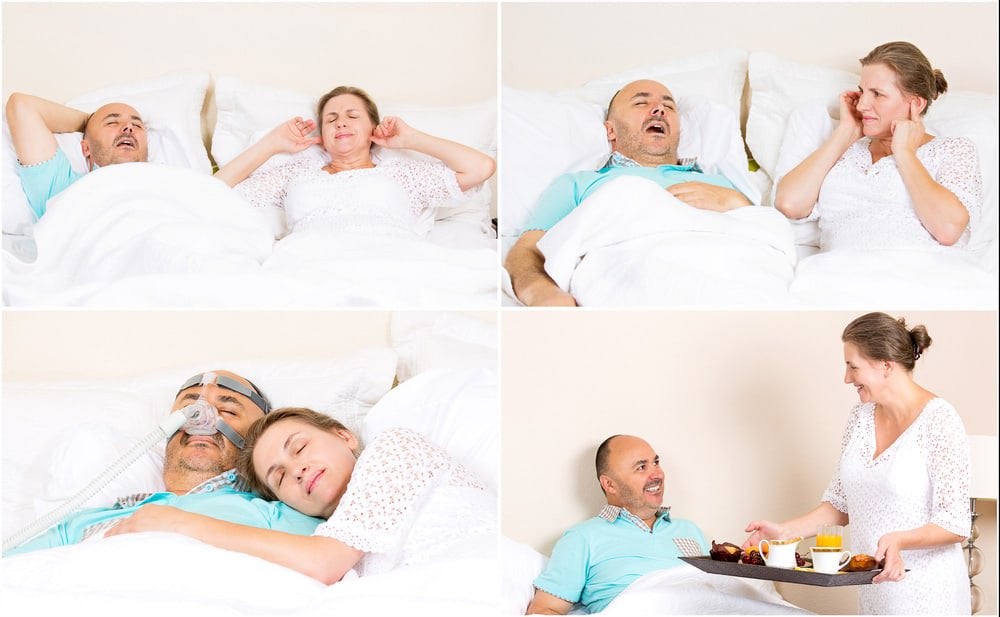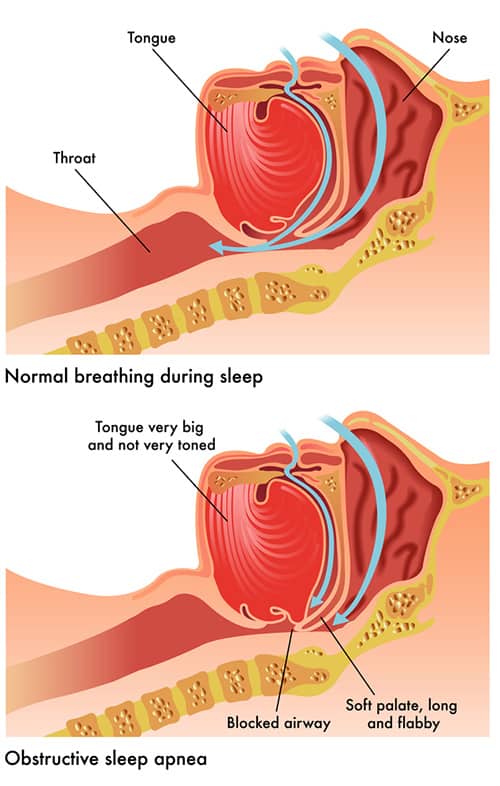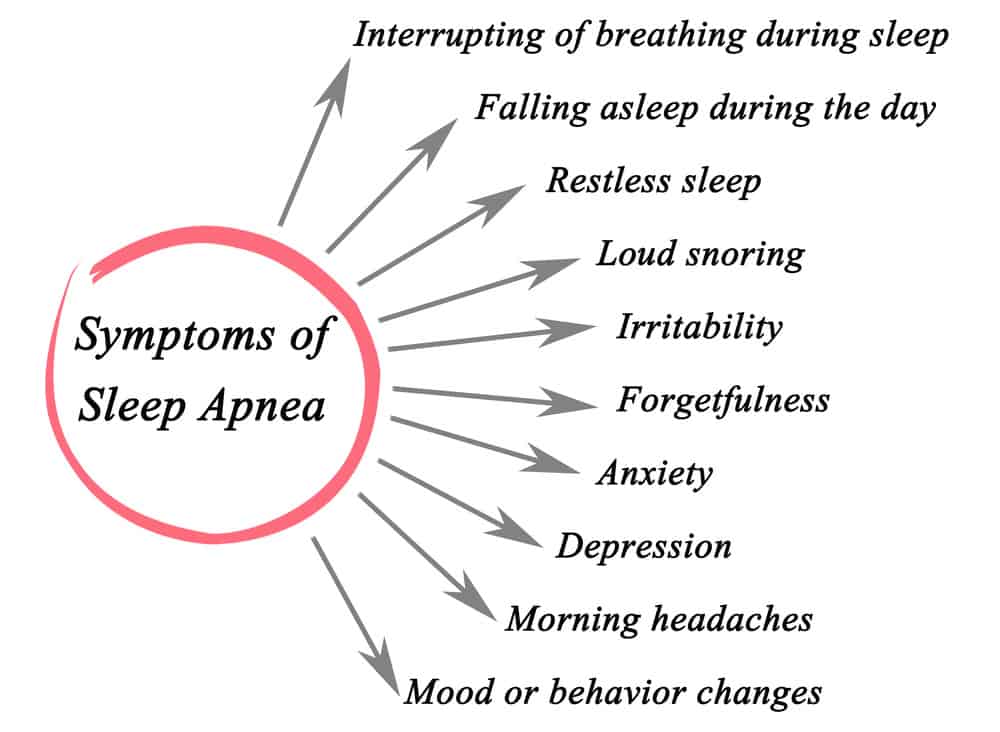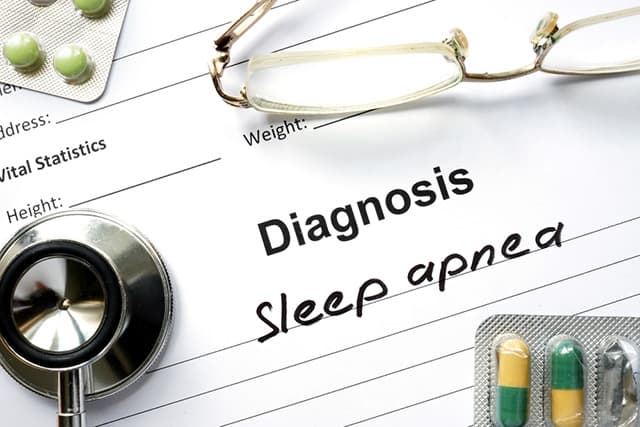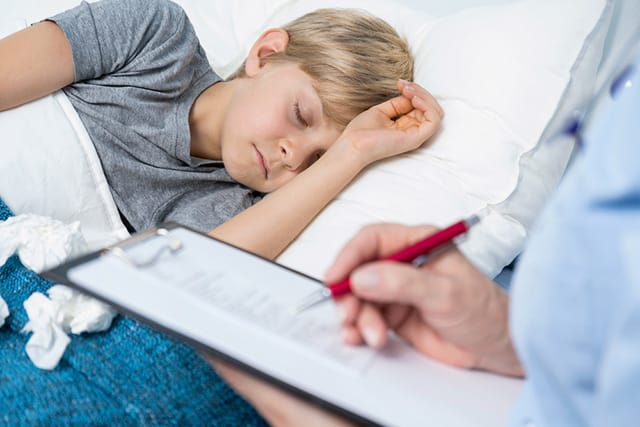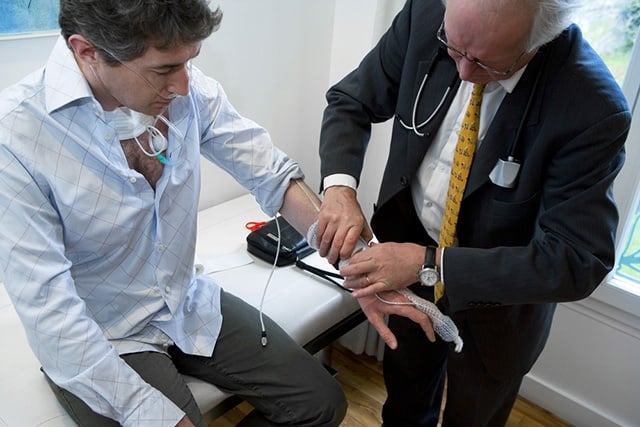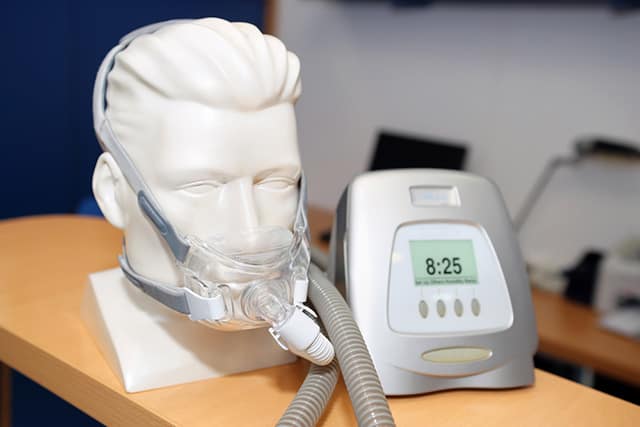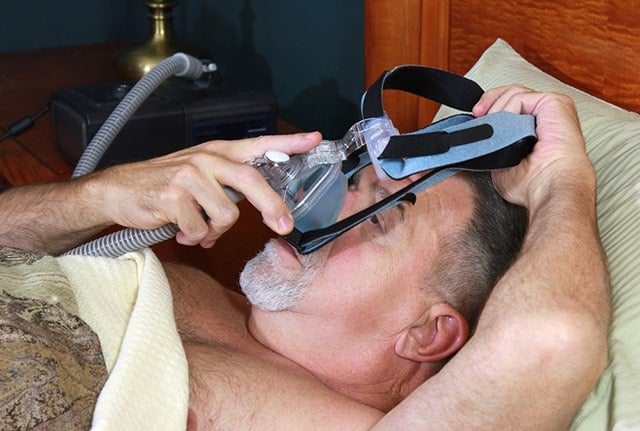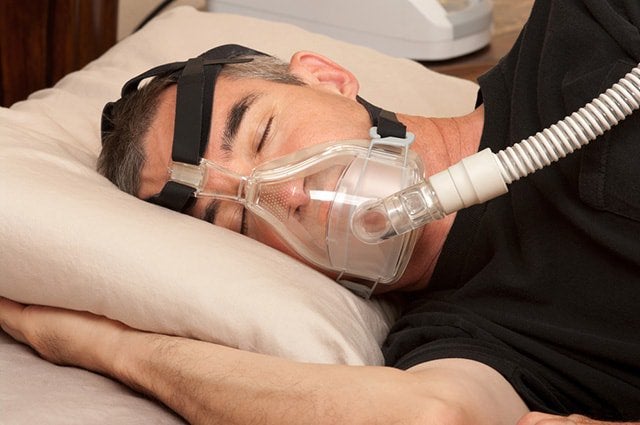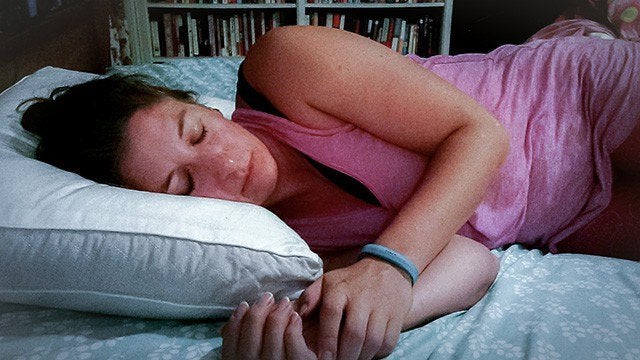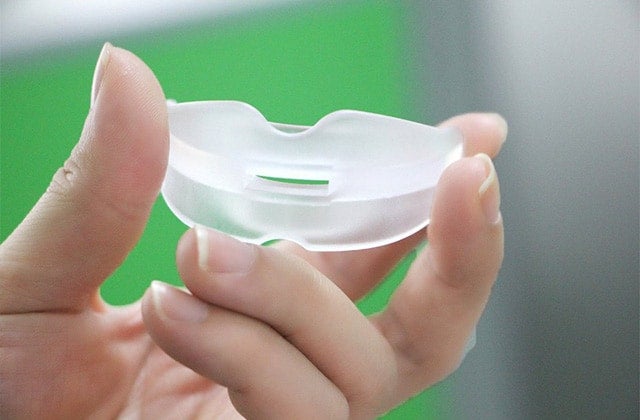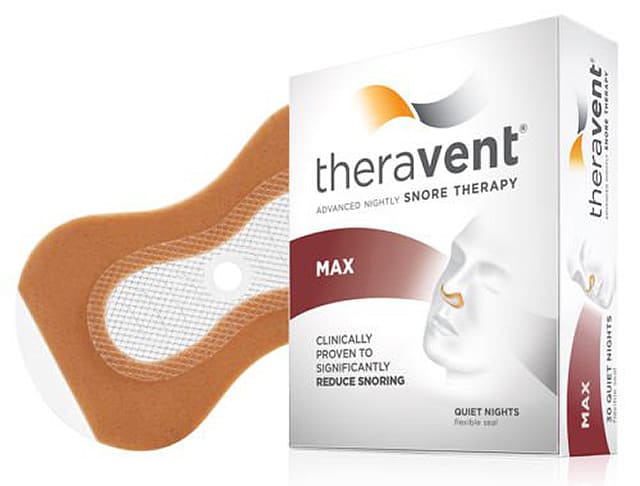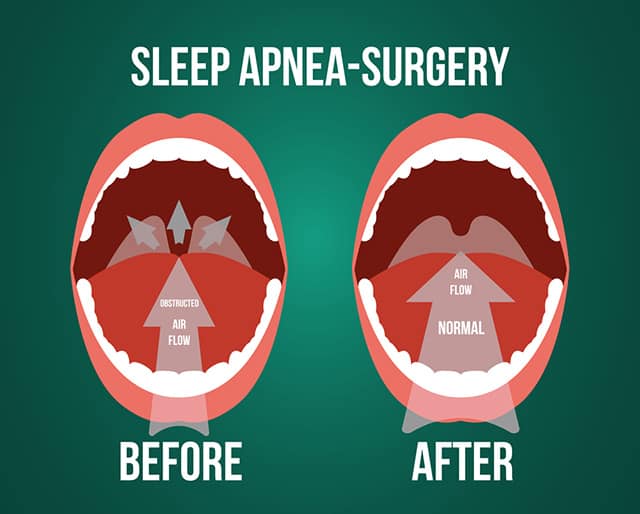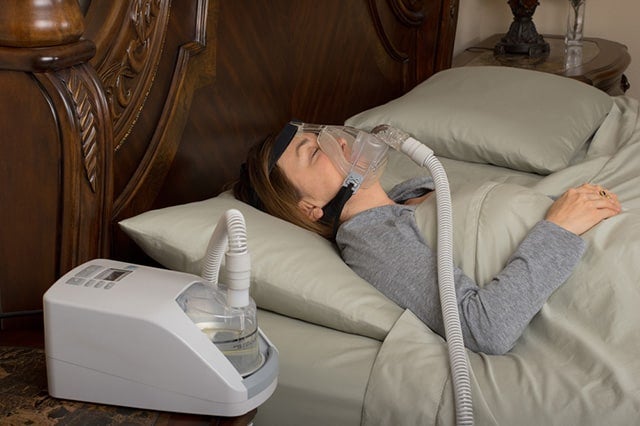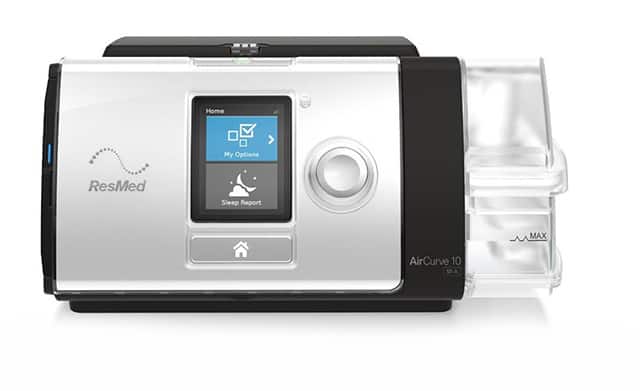The CPAP machine is an important piece of technology for many people.
It’s typically associated with sleep apnea, but how does it work? Is it something you may need? And, if you do, what are the options out there? In short, a CPAP machine can help your nights go much better, in certain situations, but what’s the best setup?
What is a CPAP Machine?
A CPAP machine is used to administer continuous positive airway pressure therapy. Thus, CPAP stands for continuous positive airway pressure. The idea behind the machine and the therapy is the air pressure in your throat is increased, thus helping it to stay open and unobstructed when breathing in. This can lead to reduced snoring issues, as well as reduced complications from obstructive sleep apnea.
There are a couple parts which make up the CPAP machine. First is the main unit, which does all the work. Second is a hose which is attached to a third part, a mask. There are actually several types of masks, as well as a few different unit styles.
For masks, there is the kind which covers both your nose and mouth, which looks similar to a surgeon’s mask. There is also another kind which just covers your nose, which is actually the most common. It’s called a nasal continuous positive airway pressure mask, or NCPAP. Lastly, there is a style which has two prongs which go into your nose.
The machines have changed over the years, and can lean toward being quite bulky. In recent years, however, some have been developed which are not only smaller, but are also portable and can be used while traveling, such as on a plane or a bus.
You may be interested in: Best CPAP Machine
Why Use a CPAP Machine?
If you find yourself tired throughout the day, even though you got a full night’s rest, or if you are told you’re snoring often, you may be suffering from obstructive sleep apnea. This is a condition which occurs when something blocks air from getting to your lungs as you sleep.
When this happens, the rest of your body has to work harder to compensate. The chest and diaphragm need to work extra hard to pull in air as they have to do it with enough force to get past the blockage. Not using a CPAP machine can severely limit your ability to breathe easily while you sleep.
You may want to read: How to Use a CPAP Machine?
What is Obstructive Sleep Apnea?
As mentioned before, obstructive sleep apnea is a condition in which your breathing passage is partially or completely obstructed while you sleep. In fact, you may not even know you’re suffering from it if you sleep alone.
What typically happens when sleep apnea kicks in is you will basically stop breathing. As your body struggles to get air in, you will loudly gasp as you are awoken just enough to inhale. You probably won’t even notice this has happened, but somebody sleeping near you might.
Symptoms of Sleep Apnea
Fortunately, there are symptoms which can alert you to your condition. Low energy throughout the day is one symptom, as is trouble concentrating, forgetfulness, depression or irritability. If you wake up with dry mouth or a sore throat, or have a headache upon waking, that could be another sign.
You can also throw in snoring, night sweats, restless sleep and trouble getting out of bed in the morning. If you have any combination of these, it could be in your best interest to have a test done to determine whether or not your issue is obstructive sleep apnea.
Diagnosing Sleep Apnea
Several things go into diagnosing sleep apnea. Your medical and family histories, physical exams and, if needed, a sleep study can all be used to figure out whether or not sleep apnea is the cause of your symptoms.
On that note, your symptoms are very important, so keeping a detailed journal of your sleep for a couple weeks before going to visit your doctor isn’t a bad idea. Keep track of when you go to sleep, when you get up, any interruptions in your sleep, how you feel each morning and whether or not you take naps. This way, when your doctor has questions regarding your sleeping habits, you’ll have exactly the answers he needs.
If you do have someone who sleeps near you, getting information from them regarding any sounds you make during sleep can also be important information. It would also be wise to inform your doctor of any family history of sleep apnea. Armed with this, your doctor can begin a diagnosis.
Physical exams are fairly simple. Your doctor will look at your nose, mouth and throat to see if there are any enlarged bits of tissue. One sign of sleep apnea which can be detected during the physical exam is an enlarged uvula, which is that little dangly thing in the back of your mouth.
If your doctor deems it to be necessary, the next step would be a sleep study. No test is better at detecting sleep apnea than a sleep study. There are two types. The first is one which can be done at home with the use of a home-based portable monitor which will check several things as you sleep. It will record the amount of oxygen in your blood, the rate at which air moves through your nose, your heart rate and any chest movements which may show you are having difficulty breathing.
The more intense study is called a polysomnogram. Should the home-based system not provide enough information, this test goes all out and pretty much tracks everything related to your sleep. This kind of test is typically performed in a sleep center or lab, and all you have to do is go to sleep with a few things attached to various parts of your body. As you sleep, the crew on hand will monitor every bit of information.
At this point, a sleep specialist will look at the information and hand out a final diagnosis to determine whether or not you have sleep apnea and whether or not you should begin to use a CPAP machine.
You may be interested in: Side Effects of a CPAP Machine
Using a CPAP Machine
We know CPAP is used for patients suffering from obstructive sleep apnea. We don’t know, however, what using a CPAP is like. Are there side effects? If so, do they outweigh the benefits of CPAP treatment? Let’s take a deeper look at this aspect.
First thing’s first, after getting your CPAP prescription and picking up your machine, you’re likely not going to have an amazing first night using it. Most people report it taking some time to get used to this foreign object on your face, increasing pressure in your throat and lungs. Eventually, though, this is going to pass.
One of the things to consider when first using a CPAP machine is to keep an eye on your settings. You can adjust this with your own data or you can get help from your doctor in order to figure out what is going to work best for you. The first few days, maybe even weeks, will be a trial and error process which is going to take some patience. The key is to remember that, in time, you’re going to feel much better.
Side Effects
As far as side effects go, there are some, but none are major. Users are looking at a dry nose and sore throat sometimes; congestion, runny nose and sneezing; skin irritation; stomach bloating; and, in very rare cases, nosebleeds.
Fortunately, there are also ways to combat these side effects. The dry nose and sore throat can be fixed by using a humidifier. Many CPAP machines come with this built in and they help a great many people. This would also likely combat the issues of nosebleeds.
The nasal issues can be fought with decongestants or nasal sprays. The irritation to the skin can be fixed by making sure your mask fits properly and is a kind which works for you. Loose masks can allow air to escape, which can be uncomfortable in its own way.
Benefits
As far as sleep apnea goes, CPAP is the cream of the crop, as far as non-surgical methods go. Using a CPAP machine allows you to feel more awake throughout the day, helps your heart and reduces your blood pressure.
The amount of time you use it can also be taken into consideration. Those who use it for around seven hours each night tend to be more alert and less depressed, with fewer heart issues, than those who only use their CPAP machine for around five hours or less. Two hours can make a whole lot of difference, apparently.
When considering these benefits, the discomfort caused by using a CPAP machine is far outweighed by the excellent health benefits of using one. This is especially true when you keep in mind the fact most of those symptoms can be combatted using simple methods.
You may want to read: Best Mini CPAP Machines
CPAP Alternatives
While CPAP may be one of the best methods, it isn’t the only way to combat obstructive sleep apnea. Sometimes people simply don’t like using CPAP machines because of issues with claustrophobia while wearing the mask or any other associated side effects. For those folks, these alternatives could work.
Positional Therapy
About a quarter of sleep apnea sufferers actual have a variation of the condition called positional obstructive sleep apnea. For these people, the way the sleep has a large effect on whether or not their sleep apnea kicks in. May people have found solving this is as simple as sleeping on your side. Doing this helps keep the airways clear and breathing easy.
Simply deciding to sleep on your side isn’t necessary an easy thing to do. After sleeping on one’s back or stomach for years, changing that position can take some time and, in some cases, could use a little help.
For this, there are a couple tricks. While there are special therapy pillows out there which make it exceedingly difficult to roll into your back, forcing you into a side-sleeping position, the same effect can be achieved with some items you may have in your own home.
The most common is to either create a pocket, or sew a sock, onto the back of a shirt you wear to sleep at night. Inside the pocket or sock, a tennis ball is placed. Have you ever tried sleeping on a tennis ball? It’s not comfortable, and you’ll quickly find yourself preferring to sleep on your side.
Studies show the system works, but it leaves something to be desired over a longer period of time and in more extreme cases.
Dental Devices
Another non-surgical tool is a dental appliance. These are devices which look kind of like mouthguards, but are actually designed to adjust your mouth in such a way as to keep your airway open and allow for easier breathing. This is really only an option for people with more mild forms of sleep apnea, as it won’t really do anything to help patients with more severe levels of the syndrome.
EPAP
One device, which is a fairly new invention, works similarly to a CPAP, but requires no additional machinery or parts aside from two plugs which are shoved into your nostrils when you sleep. The trick the EPAP device uses is to allow air to be inhaled through the nose, but not easily exhaled. It comes in through large holes, but must be pushed out through smaller ones.
By doing this, the air maintained within the breathing area is built up to a higher pressure, helping to keep the pathway open. That’s one theory, anyway. Another is that, since the body needs to get rid of the carbon dioxide it produces, it works harder to push it out through the tiny holes, thus opening the pathway more.
Beyond the reason why it works is the fact that it does work. It isn’t a cure all, especially for anyone with severe obstructive sleep apnea issues, but it can definitely reduce the symptoms felt by those who suffer from mild to moderate levels of sleep apnea.
Surgery
If you’re down for it, surgery is yet another option for not only combatting, but defeating obstructive sleep apnea. There are two methods, one far more invasive than the other.
Maxillomandibular advancement
Maxillomandibular advancement is a process is which your jaw is literally shifted by several millimeters. This means, after going through the process, you may not look quite the same and you’ll have to go through a very long recovery period. However, the success rate is quite high.
What happens is that the framework of your skeleton around the breathing passages is adjusted in order to give air an easier way to move around. There are few complications involved, but it is a delicate and involved procedure.
Uvulopalatopharyngoplasty
Another procedure which is much more common is Uvulopalatopharyngoplasty, also called UPP. In this procedure, your jaw isn’t moved, but recovery can be very painful and long, and it only has a 50 to 65 percent success rate.
This procedure works by removing excess tissue from around the breathing areas, such as the uvula, the soft palate, the tonsils and the adenoids. This is a whole lot of removing, so the recovery process is understandable.
Choosing between the two can be difficult, particularly since the success rate is much higher with the one which changes your face forever.
You may want to read: CPAP Machine VS BiPAP
Choosing What’s Right for You
Working with your doctor or sleep expert can help you find the best CPAP products for you. These range from different types of masks to different types of machines, some of which do the same thing in different ways.
There is, for instance, a kind of machine which starts with low pressure which increases as you fall asleep. This means you don’t start out with a big burst of air pressure going at you as you’re trying to wind down.
Another is called a bilevel positive airway pressuremachine, also known as a BiPAP which switches out the air pressure when you breathe in from when you breathe out. This is good for folks who find they don’t have trouble breathing out, just in. It also is good for those who have heart failure concerns.
Yet another actually adjusts the air pressure throughout the night, determining the level your body needs at any given point. Because of this, the machine may end up feeling better than your traditional CPAP device.
You may want to read: Where Do I Buy a CPAP Machine?
Other Questions
You may be wondering whether or not there is a difference for CPAP uses between babies, children, women and men. In some situations, a CPAP machine may be used for babies who are having trouble breathing. The difference between a CPAP machine and a ventilator, which you often hear about being used, is that the CPAP machine doesn’t breathe for the baby, it just makes it easier for them.
CPAP for older children isn’t all that different from the kind used for adults. The only real difference is the potential use of a pediatric CPAP mask, one which is designed to be more comfortable for the child while being more difficult to remove accidentally. If your child is in need of a CPAP, rest assured the option exists, just be sure to let them know there’s nothing scary about it.
While obstructive sleep apnea is found less often in women, it is a possibility. For those who suffer from it, they will be happy to know CPAP works just as well for them.
Other CPAP Uses
Even though CPAP is indicated for people who suffer from sleep apnea, it’s not the only condition which can be helped by the device. For instance, CPAP can be used in a roundabout way to help fight asthma.
Studies have shown that people who suffer from asthma are more prone for problems with obstructive sleep apnea. On the flip side, sleep apnea can also make asthma worse by leading to acid reflux issues, weight gain and obesity, which constricts air in the lungs. By using a CPAP machine, these things are avoided and asthma can be made a bit better. Now, this isn’t to say CPAP will fix asthma, but it can certainly help when sleep apnea is involved in an asthmatic patient.
Another condition for which CPAP can be of use is chronic obstructive pulmonary disease. This is a series of lung conditions which typically make it very hard to breathe and can lead to more serious issues. For people who have to deal with COPD, a CPAP machine can help by lowering the mortality risks of those who have both sleep apnea and COPD. COPD has no cure, but using a device such as this can be helpful in increasing the lifespans of those who have to deal with the chronic disease.
You may be interested in: CPAP Cleaning Machine
The Wonderful CPAP Machine
It’s not hard to see why the CPAP machine is so helpful for those who suffer from obstructive sleep apnea. Being able to get through the night with far better levels of sleep than you may be used to is something nobody should pass up. Sure, starting off it may be a bit uncomfortable and you may suffer a few side effects, but this device can help your body in ways far beyond just getting a good rest.
Sleep apnea is a disease from which many people suffer, and any little bit of help is good. The fact the machine can be used for other conditions is just a plus, and being able to find one which works just right for you, and a mask which feels made for you, means you’ll live a healthier, happier life. If you decide this is the route for you, stick with it. You’ll be glad you did.
